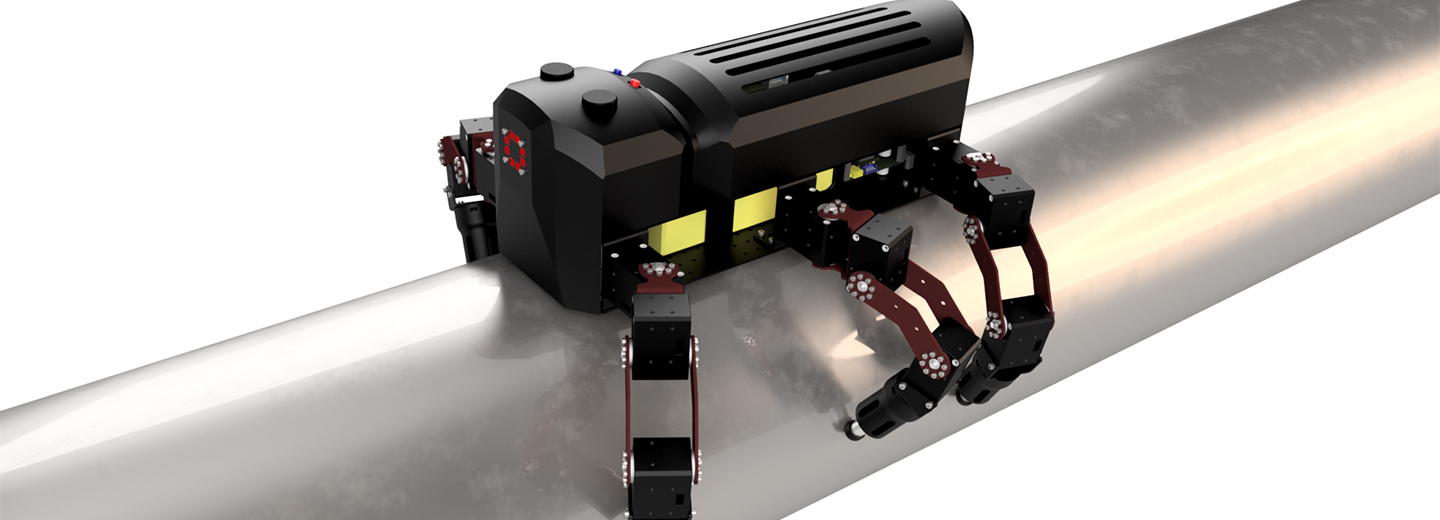
What does a headless chicken have to do with robots?
The talented researcher has already developed his first robot animal: a robot insect that crawls on pipes and can keep its footing in rough terrain. Now he is underway with his next project - developing a robot brain inspired by animals.
By Birgitte Dalgaard, bird@tek.sdu.dk
- A chicken can run around without its head, points out robot developer Mathias Thor. He works in the field where robots meet nature. This world is called biorobotics, and in it a headless chicken inspires the thought that the best way to get robots to walk is via reflexes or central pattern generators.
25-year-old Mathias Thor from SDU Embodied Systems for Robotics and Learning is picking up tricks from the characteristics of animals and transferring them to robots via artificial intelligence. He has developed the insect robot MORF - Modular Robot Framework, which crawls on six legs but with just a few adjustments can be converted into a mammal with four legs.
- Personally, I think the most interesting thing is researching robot brains for insects because insects can survive in different surroundings with very small brains. I watch many hours of TV about animals and work closely with biologists to learn things about animals, like how they move, says Mathias Thor.
”Personally, I think the most interesting thing is researching robot brains for insects because insects can survive in different surroundings with very small brains.
Inspired by headless chickens
Inside the insect robot's legs are a total of 18 motors which control three joints in each leg. Altogether, this requires a tangle of complicated code in order to get the robot to control all motors at the same time. This is where the headless chicken comes into play. It has inspired Mathias Thor to attempt to transfer nature's smart solutions to the robot so it can control its many legs with a minimum of coding.
He points to the insect robot's feet, which contain silicone so that the feet give when the robot walks. This is a very basic example of moving some of the robot's intelligence into its body without the researchers having to programme it.
- You don't actively think about walking. It's just something we do using the central pattern generators in our spinal cord, says Mathias Thor.
He explains that a central pattern generator is a group of neurons in the spinal cord that sends rhythmic signals to the muscles in the legs. The signals make the muscles move in a way that enables the legs to walk. This happens independently of the brain.
Watch video about Mathias Thor
Robot insect inspects pipes
- We've tested our robot walking on pipes. We expect that with sensors and cameras on its stomach it will be able to inspect pipes that are inaccessible to humans - for instance, pipes on drilling platforms, says Mathias Thor while showing pictures of the robot insect, which using its six legs gets a good grip on a pipe and crawls up it.- By studying videos of the crawling techniques of different animals we came across the larva. We observed how the larva crawls up a plant stem. That's the method we've copied for the robot, says Mathias Thor and points out that around half of the earth's surface is inaccessible with wheels, but with its six legs the robot has optimal manoeuvrability and can walk over rough terrain.
The robot insect's most important task is now as a research platform in the researchers' continuing work on equipping walking robots with a biologically inspired robot brain, so that the robots are equipped with even more competences, such as pathfinding, climbing, planning and making their own decisions.
- It's incredibly exciting work. If we can equip the robot insect with a brain, it will be able to make intelligent decisions and navigate just like real insects can using their small brains, says Mathias Thor.
Meet the Researcher
Mathias Thor is the recipient of the Ministry of Higher Education and Science's Elite Research travel grant, which the Ministry of Higher Education and Science awards to very talented PhD students. Mathias is a PhD student in bioinspired robots and has developed the insect robot MORF - Modular Robot Framework. The robot is a research platform which can be equipped with new abilities - and more or fewer legs. The robot researchers are using the insect robot in their work on developing an artificial brain for robots.